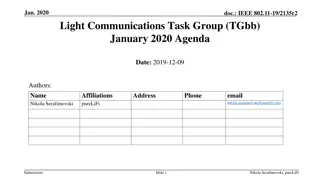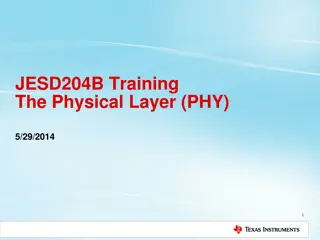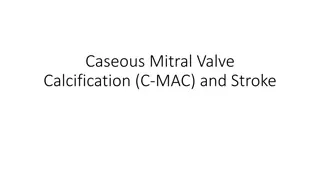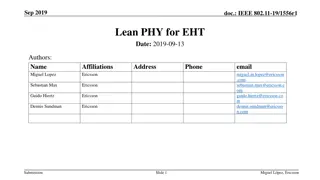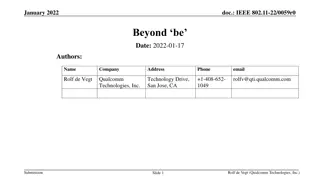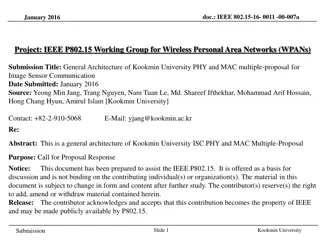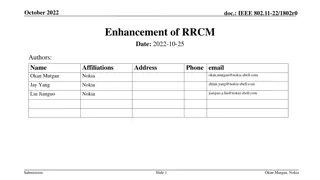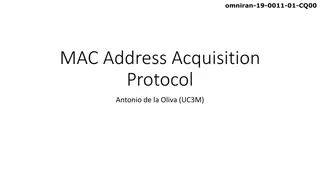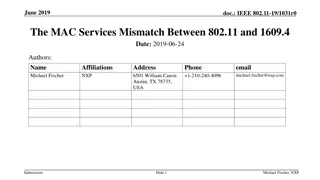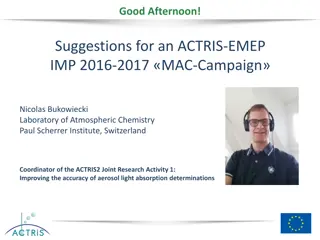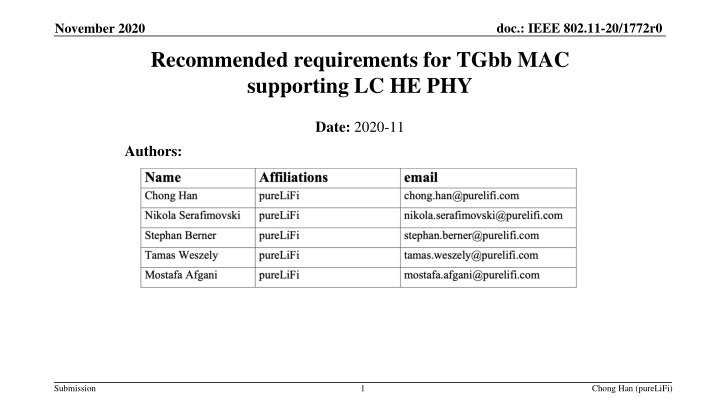
Recommended Requirements for TGbb MAC Supporting LC HE PHY
Discover the recommended requirements for the TGbb MAC supporting LC HE PHY in the IEEE 802.11-20/1772r0 presentation by Chong Han from pureLiFi. The document outlines modifications proposed for the LC HE MAC in Clause 26 and UL random access operations, emphasizing the need to optimize resources and reduce collision probabilities. Dive into the details of UL OFDMA-based random access, UORA functionality, and more to understand the implications for large-scale wireless network implementations.
Download Presentation

Please find below an Image/Link to download the presentation.
The content on the website is provided AS IS for your information and personal use only. It may not be sold, licensed, or shared on other websites without obtaining consent from the author. If you encounter any issues during the download, it is possible that the publisher has removed the file from their server.
You are allowed to download the files provided on this website for personal or commercial use, subject to the condition that they are used lawfully. All files are the property of their respective owners.
The content on the website is provided AS IS for your information and personal use only. It may not be sold, licensed, or shared on other websites without obtaining consent from the author.
E N D
Presentation Transcript
doc.: IEEE 802.11-20/1772r0 November 2020 Recommended requirements for TGbb MAC supporting LC HE PHY Date: 2020-11 Authors: Submission 1 Chong Han (pureLiFi)
doc.: IEEE 802.11-20/1772r0 November 2020 Abstract The presentation provides the review of recommended requirements of the LC HE MAC for TGbb. The clauses/subclauses referred in the slides come from IEEE P802.11axD7.0. Submission 2 Chong Han (pureLiFi)
doc.: IEEE 802.11-20/1772r0 November 2020 LC HE MAC Unchanged text from IEEE P802.11ax: Clause 26 (except 26.5) Modifications: 26.5 MU operation 26.5.2 UL MU operation Modifications proposed on Slide 26.5.4 UL OFDMA-based random access (UORA) LC HE STAs set the OFDMA RA Support subfield to 0 Submission 3 Chong Han (pureLiFi)
doc.: IEEE 802.11-20/1772r0 November 2020 UL Random Access Disable the optional UORA (UL OFDMA-based Random Access) In the context of TGbb, association/reassociation is not expected to be as frequent as in IEEE P802.11ax. The UORA is designed to serve large amount of users, which is also not the case in TGbb. Channel sensing in WiFi cannot easily migrate to TGbb. LC HE STAs set the OFDMA RA Support subfield to 0 Submission 4 Chong Han (pureLiFi)
doc.: IEEE 802.11-20/1772r0 November 2020 UORA (UL OFDMA-based Random Access) No dedicated resource allocation for all; flexibility; uncertainty Eligible STAs with OBO counter number (<= Available RUs for AID0/2045/2046) compete for RA-RUs Random selection of AID0(for associated STAs)/2045or2046(for unassociated STAs) RUs causes collisions Submission 5 Chong Han (pureLiFi)
doc.: IEEE 802.11-20/1772r0 November 2020 Modified UL MU operation Reserve a Resource Unit for Random Access in UL MU operation STAs know where to do Random Access. Reduce collision probability, wasted resources, and retransmissions. SIFS SIFS Trigger frame AID 0, RU 1 RU 1 is reserved for Random Access AID 4, RU 2 AID 4, RU 3 HE TB PPDU from STA of AID 4 HE TB PPDU from STA of AID 4 Multi-STA BlockAck AID 9, RU 4 HE TB PPDU from STA of AID 9 AID 3, RU 5 AID 3, RU 6 HE TB PPDU from STA of AID 3 HE TB PPDU from STA of AID 3 Backoff Submission 6 Chong Han (pureLiFi)
doc.: IEEE 802.11-20/1772r0 November 2020 Conclusion The document provides a guidance for the recommended requirements on MAC sub-layer running LC HE PHY. The random access UL function UORA is disabled to reduce collisions; UL MU operation is modified to provide UL Random Access. Submission 7 Chong Han (pureLiFi)





